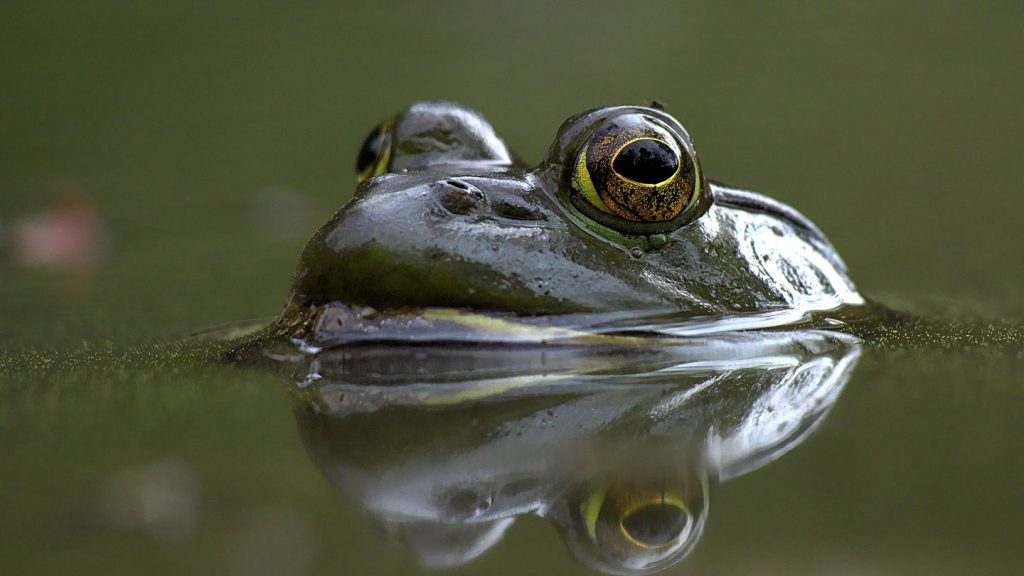A small and critically endangered tree frog species known as Pithecopus rusticus that lives in Brazil is facing a potential threat from the invasive American bullfrog. Genetic traces of bullfrogs have been found in the high-elevation grasslands of Santa Catarina, not far from the only known habitat of P. rusticus. The discovery of bullfrog DNA in this area raises concerns for the survival of the tree frog species, as the bullfrogs are aggressive invaders known to outcompete native species and spread diseases like the deadly chytrid fungus.
Pithecopus rusticus, which was first discovered in 2009 and described in the scientific literature in 2014, is a small tree frog species with neon green, orange, and black coloration. Surveys in the high elevation grasslands near the frog’s known habitat have failed to locate any additional populations. To address this conservation challenge, researchers led by ecologist Julia Ernetti undertook an innovative approach by analyzing environmental DNA samples collected in the Wildlife Refuge of Campos de Palmas in December 2020.
Despite not finding any DNA traces of P. rusticus in the samples, the researchers detected evidence of the presence of American bullfrogs in the refuge. Given the potential threats posed by the invasive bullfrogs to native species like P. rusticus, urgent conservation efforts are needed to protect the fragile frog population. Bullfrogs are generalist feeders that can outcompete native amphibians, spread diseases, and disrupt ecosystems, making them a significant concern for conservationists.
The introduction of bullfrogs to Brazil in the 1930s for human consumption has led to the establishment of both farmed and wild populations in Santa Catarina and neighboring states. Bullfrogs pose a serious threat to native species due to their voracious appetites, prolific reproduction, and ability to outcompete local amphibians. In the delicate subtropical highland grasslands of Brazil, an invasion of bullfrogs could have devastating consequences for endemic and endangered amphibians like P. rusticus.
Efficient strategies for the detection and eradication of exotic and invasive species are crucial for safeguarding native biodiversity in the face of threats like the American bullfrog. However, once established, bullfrogs are challenging to manage, and there are limited effective control methods available. The potential impact of bullfrogs on native species, particularly in sensitive ecosystems like the grasslands of Brazil, underscores the importance of proactive conservation measures to prevent species extinction and preserve biodiversity.


